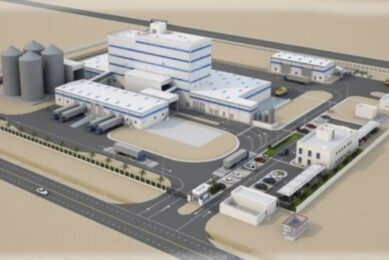Blog: The hidden danger of what you don’t know

Integrated data delivers real-time picture of customer profitability: The makeup of your sales can have a huge impact on the overall profitability of your feed operation. Margins are tighter than ever, and your company has to react quickly to changes in the marketplace to stay in business, let alone stay competitive.
To truly understand the profitability of your feed operation you need to be able to accurately track revenue and costs down to the individual order level. Only then can you determine what your margins are by customer and by product, and make sound business decisions using this information.
Is your sales order processing and accounting system capable of this level of detail and data analysis? Many are not. The value of this capability can pay for implementing a new system in less than a year. The intangible value is even more critical: missed buying opportunities for well-priced ingredients because you did not have real-time information; the ability to identify specific formulas and products that cost more than they are worth in profits to produce—or that nagging customer who is a constant drain on your staff’s time and your mill’s production capacity.
As the saying goes ‘information is power’ and if you do not have it, your competitor will. So let me offer a few suggestions on how to leverage this ‘mill intelligence’ once you get it:
- Make a ‘margin review‘ a part of your annual planning process. Establish goals and objectives and review on a monthly basis to spot trends and adjust your strategy. Set margin goals by product line and customer type as well as for the overall operation. What product lines are most profitable? Least profitable? Use this information to develop sales and marketing plans.
- Consider dropping very low margin product lines unless there is a valid reason to keep them. (One reason may be that a high value customer requires these products and would purchase elsewhere if you did not carry them.)
Speaking of high value customers, do you know who they are? Do you know how each contributes to your profitability? Some customers may purchase large volumes of feed, but the margins are very low and they are very demanding. Is it worth keeping them as a customer just so the mill runs at capacity? In many cases it is not, especially if you are including accurate and up to- date repair, maintenance, and replacement costs for equipment. Tracking data that is ‘actionable’ requires a robust solution. To gain an accurate, real-time picture of every customer and every product requires lots of detail. How your inventory valuation is set up and how the inventory data and Cost of Goods Sold information is calculated and stored will have a significant effect on how accurate these numbers will be.
Granted, this is lots of data to analyse, but in reality, this is the price of entry for successful and profitable feed enterprises in today’s chaotic global feed marketplace. To stay competitive, your information systems must present data in multiple ways, or easily provide the data to Excel for analysis. As technology advances at warp speed, the feed industry is not immune to the rapid-fire changes technology is enabling in how business is conducted and the speed at which this happens. Unfortunately, many information systems in use today do not have the capability to easily report on cost and margin data down to the individual order level because they lack the interoperability and analytics that drive the newer state-of-the art solutions developed exclusively for the feed industry.
What capabilities should you look for? First, it is imperative that you spend your valuable time analysing information, not entering data, so system integration is a must. The following systems should be integrated to your information system to share data electronically:
- Formulation system – interface raw material costs and formulas
- Manufacturing Execution System (MES) – interface manufacturing orders and actual raw material usage
- Feed Labelling – interface formulas and label text
- Accounting/Financials – interface sales and manufacturing orders and actual usage and deliveries
The sales order processing function of your system must be able to store theoretical products and quantities as well as the actual quantities to track what was actually delivered to the producers. There are other aspects to consider as well, but this is a good place to start.
Communication technologies today can provide all this information on a near real-time basis if your systems are correctly designed. If your systems do not take advantage of these capabilities, how much revenue are you missing? You cannot make good business decisions if you do not have timely and accurate information.
In today’s unpredictable world of wildly fluctuating ingredient prices, changing customer demands, complex regulatory requirements and more—what you don’t know will hurt your business. Fortunately, most of the answers you need are within your reach. Isn’t it time you leverage the power of technology to access them?











